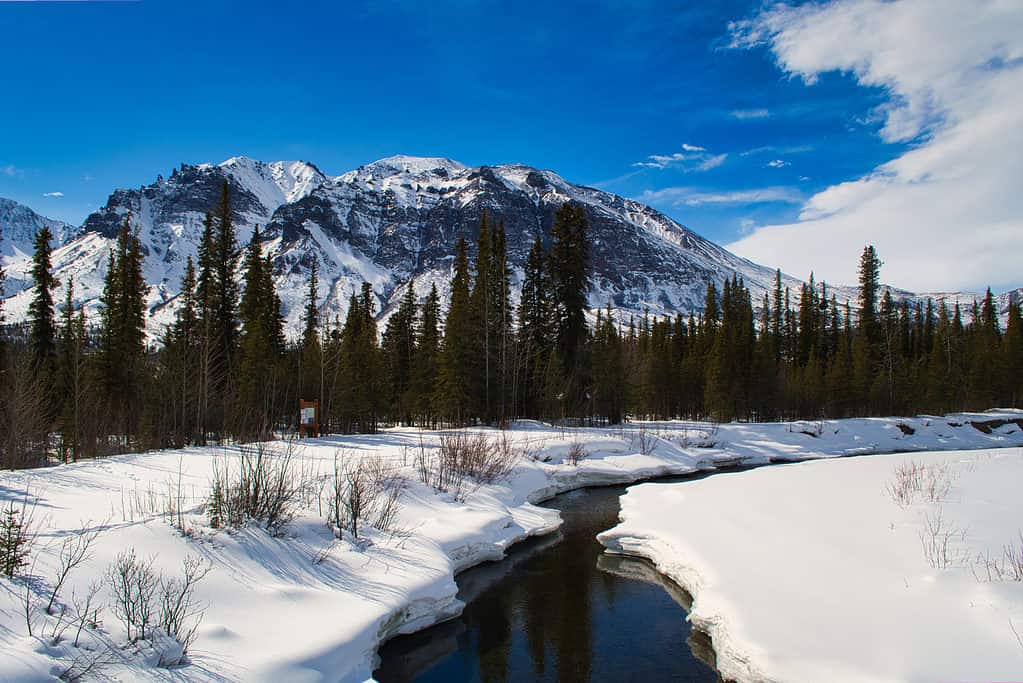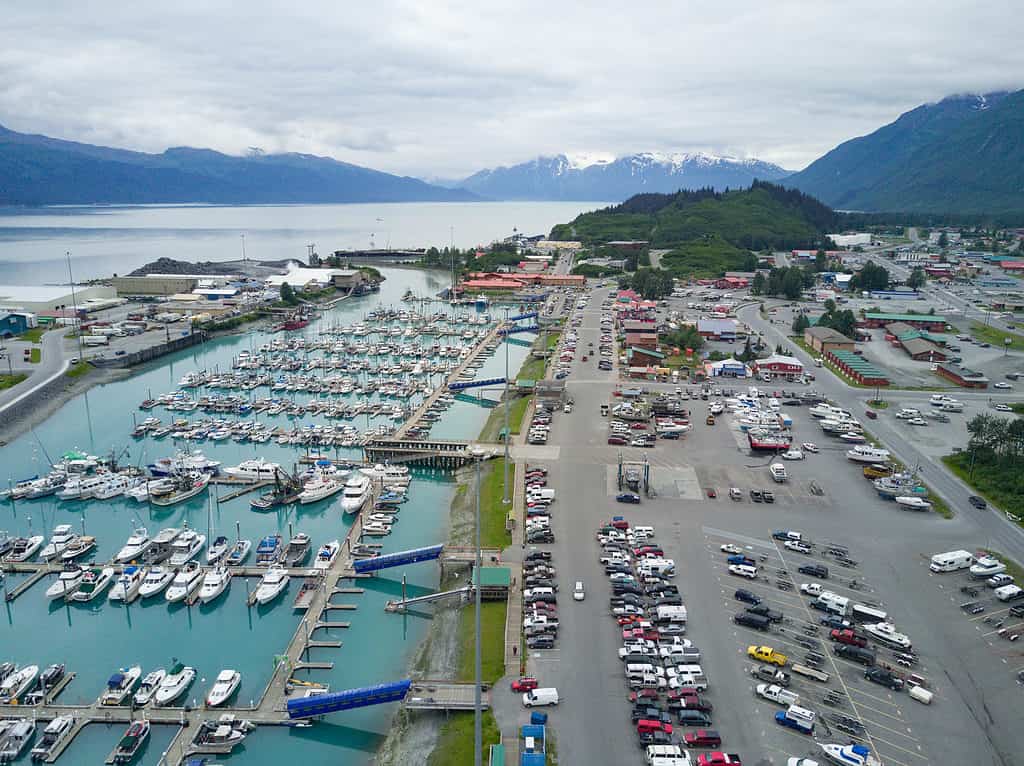There’s no doubt about it: Alaska may just be one of the snowiest places in the entirety of the United States. However, just how snowy is it? And where is most of that snow found? If you’re not sure of the answer to these questions, don’t worry.
This complete guide will walk you through everything you need to know about the snowiest place in Alaska. Ready to learn more? Keep reading below!
What Town Receives the Most Snow in Alaska?
Although Alaska isn’t the snowiest state (that honor goes to Vermont), it does have one of the snowiest cities in the entire United States. If you’re wondering where exactly the snowiest place in Alaska is, look no further than Valdez.

Valdez is the snowiest place in Alaska, receiving an average of over 20 feet of snowfall each year.
©iStock.com/Debora Vandor
About Valdez, Alaska
Valdez, Alaska, receives an average of over 20 feet of snowfall yearly. It is ideally located to receive this amount of snow and thus become the snowiest place in Alaska.
You see, Valdez is a small port town in Alaska. It’s situated right on a deep fjord in the Prince William Sound. However, it’s also tucked in at the base of the Chugach Mountains. This mountain is known for its glaciers, including Knik, Columbia, Worthington, and the Bagley Icefield. The frosty conditions presented by the fjord and the mountains allow for Valdez to receive around a foot of snow some nights easily!
Despite the unique dangers and situations that such heavy snow can bring, such as having to shovel your roof regularly to prevent snowslides, over 3,500 people (3,985 as of 2020) call this snowy little town home. Thanks to its availability of snow sports and the beautiful scenic views it offers, it’s also a popular tourist destination.

Valdez, Alaska, is tucked in at the base of the Chugach Mountains.
©iStock.com/SRIMAN EMANY
History
Valdez first received its name in 1790 when it was named for the Spanish Navy Minister Antonio Valdés y Fernández Bazán. It’s known as a former Gold Rush town, and its port made it easily accessed during the earlier centuries of world exploration. However, the port and town didn’t begin to grow until 1899. This was when a road to Fairbanks was built, allowing more people to access the town and different markets.
Despite being a fairly small town, Valdez hasn’t always had an easy history. Like many other cities in the area, the 1964 Alaska earthquake, also called the Great Alaskan earthquake and Good Friday earthquake, had a large impact on the little town. This earthquake reached magnitudes of 9.2 briefly, making it the second strongest earthquake in the United States. It led to fissures, tsunamis, destruction of buildings, and a total death count of 131.
Valdez was also the site of the 1989 Exxon Valdez oil tanker spill. This disaster led to almost 11 million gallons of crude oil being leaked into the Prince William Sound. The spill was exceptionally difficult to clean due to Valdez’s remote and difficult-to-access location, and its effects resulted in the death of hundreds of thousands of animals local to the area.
Today, despite its snowy conditions, Valdez is still one of the most important and most frequented ports in all of Alaska.

Valdez is one of the most important and most frequented ports in Alaska.
©iStock.com/Warren A Metcalf
Climate
Although Valdez is the snowiest place in Alaska, it’s not always snowy. It has a subarctic climate, where winters can be more extreme than they are in the continental United States. However, summers can actually see relatively warm temperatures. The average high during July is 64 degrees Fahrenheit. The record high in June was 90 degrees.
Not only is Valdez considered the snowiest place in Alaska, but many sources also consider it to be the snowiest place in the United States. In a single year, it can receive 300 inches of snow. That’s the same as four refrigerates stacked on top of each other!
Wildlife
You wouldn’t think such a snowy town would have an abundance of wildlife. However, between the sound and the mountains, there are ample habitats fit to support a wide diversity of animals.
Towards the ports in Valdez, you can spot many different types of animals that thrive near water. This includes many bird species, such as eagles, puffins, and ptarmigan. You also can’t forget about the amazing animals under the water, such as seals and sea lions. Valdez is even home to humpback whales and orca spottings!
Inland, it’s almost like a completely different world. You’ll be able to trade sightings of marine animals for bears, songbirds, and Arctic ground squirrels. There are also smaller critters to be seen as well, such as spiders, snow fleas, and snow worms.
The photo featured at the top of this post is © iStock.com/Lance King
Sources
- Damage Assessment, Remediation, and Restoration Program, Available here: https://darrp.noaa.gov/oil-spills/exxon-valdez
- USGS, Available here: https://earthquake.usgs.gov/earthquakes/events/alaska1964/
Thank you for reading! Have some feedback for us? Contact the AZ Animals editorial team.






